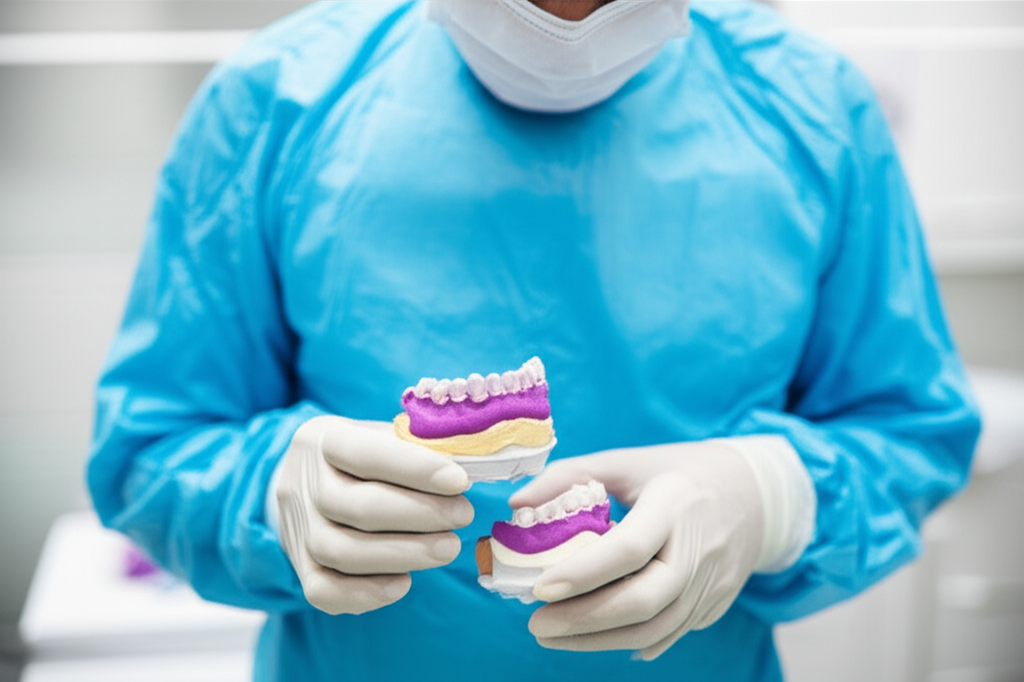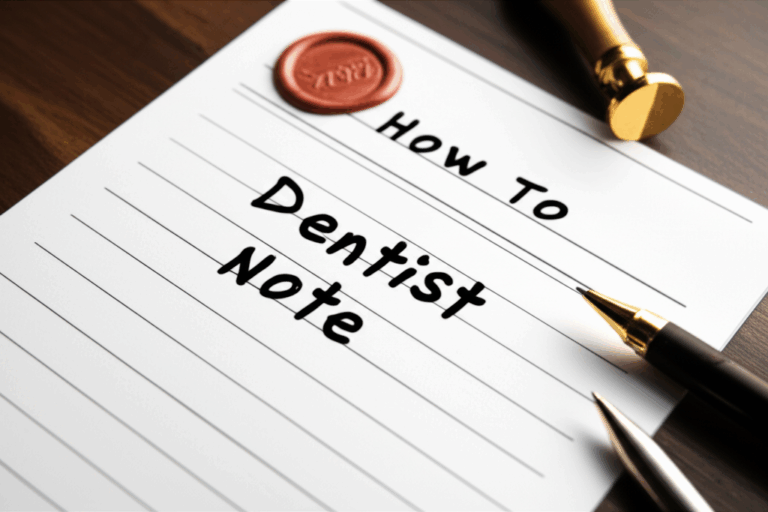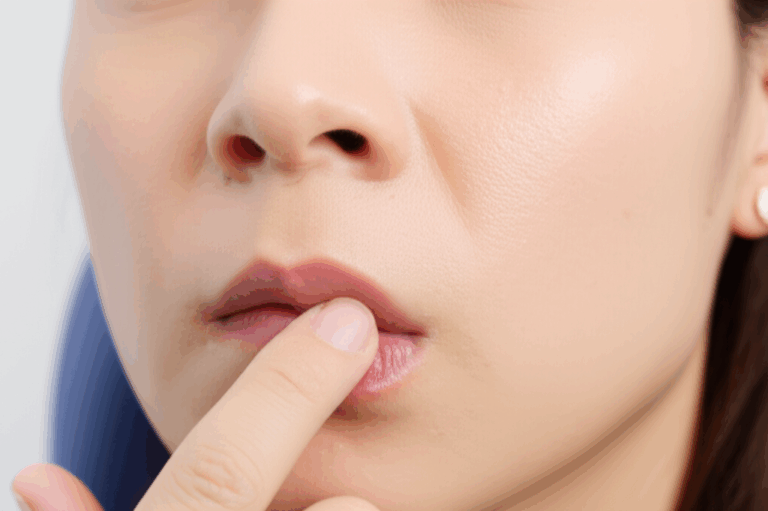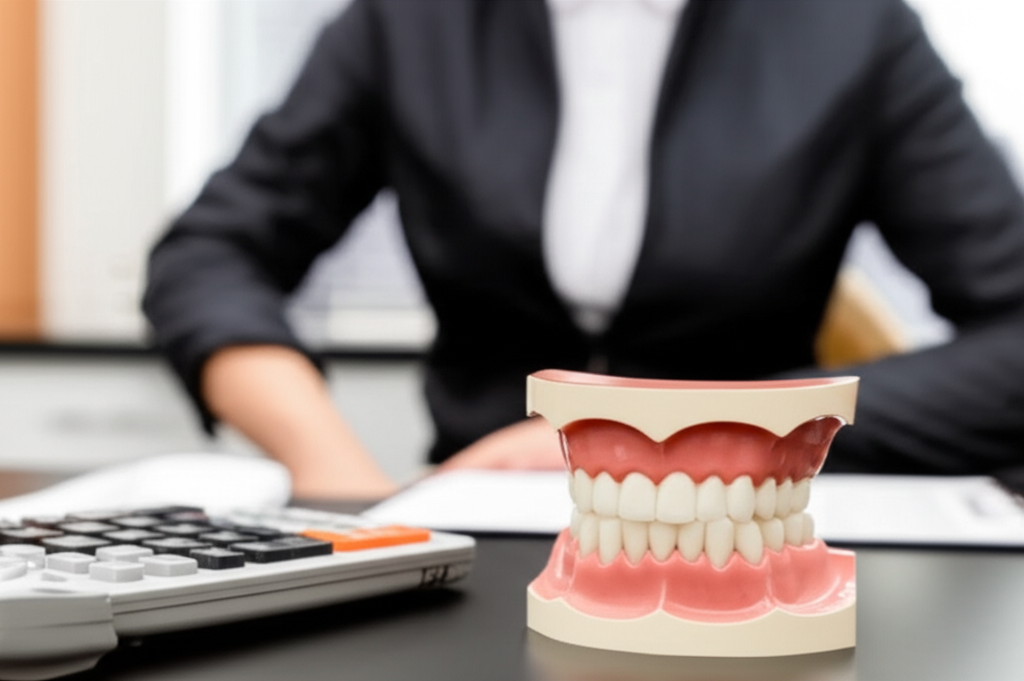
Why Your Dentist Needs Preliminary Impressions: A Simple Guide to Dental Molds and Planning Your Care
Have you ever sat in the dentist’s chair and wondered, “Why is the dentist putting this thick, minty stuff in my mouth to get a mold—before fixing anything?” If you’ve thought, “Why does a dentist need preliminary impressions?”, you’re not the only one. Many people find this step odd, especially before braces, crowns, dentures, or any big dental fix. But is this normal? Yes! Taking preliminary impressions is one of the most common (and least explained) steps in today’s dental offices.
Let’s break it down: I’ll tell you what preliminary impressions are, why they’re important, what happens while you get one, how they fit into your treatment, and what comes after. My goal? To take away your worry and confusion about one of dentistry’s most basic steps.
In This Article
- What Are Preliminary Dental Impressions?
- Why Do Dentists Request Preliminary Impressions?
- What Should You Expect During the Impression Process?
- Preliminary vs. Final Impressions: What’s the Difference?
- Are You a Candidate for Dental Impressions?
- Key Takeaways and Your Next Steps
What Are Preliminary Dental Impressions?
You’ve probably seen it somewhere—a dentist presses a tray with soft, thick goo into someone’s mouth, waits a minute, then pulls out a bumpy mold. But why do they do this?
Preliminary impressions are the first molds a dentist takes of your teeth and gums. Think of them as a starting photo of your mouth—a physical “blueprint.” These impressions let your dentist make a 3D copy of your mouth. They’re the starting point for models, which your dental team uses to see your teeth clearly, plan treatments, and know exactly what to do.
Remember: these are not the same as “final impressions” (which come later and are even more exact), and each has its own purpose in your care.
Why Do Dentists Request Preliminary Impressions?
Let’s answer your big question: Why does your dentist want a mold of your mouth? It all comes down to one thing—accuracy. Here’s why these impressions matter so much.
A. Finding Problems Early
Trying to fix a car without looking under the hood is risky. It’s the same with your teeth. Even a great dentist can’t see everything just by looking. With a preliminary impression, your dentist makes a study model—basically, a hard copy of your teeth and gums they can look at from all sides.
Why does this help you?
- Catch hidden problems: These models help catch things you can’t see, like a bad bite, crowded teeth, gaps, or jaw issues.
- See the whole story: Your dentist can check how your teeth fit together and spot wear and tear from things like grinding.
B. Helps Plan Your Dental Care
If you’re fixing up a house, you measure things first. For your dentist, preliminary impressions are those “measurements.” Here’s how they fit in:
Braces & Aligners:
- Impressions help plan how to move your teeth, make braces, or build see-through aligners (like Invisalign).
Crowns, Bridges, Dentures, Implants:
- If you’re getting a tooth replaced, impressions check spacing and bite so your dentist can design something that fits just right.
- For dentures, impressions make your new teeth fit your gums and mouth shape.
Big Fillings or Tooth Repairs:
- Really tricky fillings need a “map” of your teeth so they bite together right.
Tooth Pulls and Implants:
- Planning for removals or implants is much easier with a 3D model of your mouth.
Why should you care?
A good plan means your treatment works better, takes less time, and feels better in the end.
C. Making Custom Dental Gear
No two mouths are the same—so your dental stuff shouldn’t all be one-size-fits-all. Here’s how impressions help:
- Custom Trays: Your dentist might use your mold to make a special tray for the next, even more accurate impression—a must for getting dentures, crowns, or bridges just right from a crown and bridge lab.
- Night Guards & Sports Mouthguards: If you grind your teeth or play sports, a custom guard from your impression gives way better protection than something bought at a store.
- Temporary Teeth: Impressions also make sure any fake tooth you get while you wait on the real thing looks decent and lets you eat.
- Whitening Trays or Retainers: A good fit means they work better and feel nicer!
D. Your Starting Point for the Future
Let’s be real—your mouth changes as you age or get dental work, or if you grind your teeth. An impression taken at the start gives your dentist a baseline—like a “before” photo.
This helps to:
- Track changes: Is your night guard working? Are your aligners moving teeth the right way?
- Show you your mouth: Seeing a copy of your teeth helps you understand what’s being done.
- Keep good records: It protects both you and the dentist if you ever have questions down the line.
What Should You Expect During the Impression Process?
The idea of a tray of thick stuff in your mouth isn’t fun. If it makes you uneasy, you’re not alone. Here’s what really happens, so you can relax and be ready.
The Materials: Alginate and Friends
Most preliminary impressions use alginate, which is a safe, seaweed-based powder mixed with water. It turns into a jelly-like goo that sets fast—sometimes in just a minute or so.
- Impression trays (they look a bit like wide spoons) hold the goo, then get pressed over your top or bottom teeth.
Here’s What Happens, Step by Step:
Questions and Worries
“Does it hurt?”
No, it shouldn’t hurt at all! It might feel a little bit squishy, but that’s it. If you have sore teeth or gums, let them know—they can be gentle.
“What if I gag?”
Lots of people worry about this. Some tricks:
- Breathe through your nose, nice and slow.
- Wiggle your toes or count in your head.
- Let the dental team know if this is a big problem—they can use a smaller tray or help distract you.
“How long does it take?”
Usually, the whole thing is done in under five minutes for each arch (upper or lower teeth).
Preliminary vs. Final Impressions: What’s the Difference?
If you’ve heard “preliminary” and “final” impressions, you might think, why do it twice? Here’s a quick breakdown:
| Preliminary Impressions | Final Impressions | |
|---|---|---|
| Why Taken? | For planning, checking teeth, and making custom trays | To create the perfect, last step (like crowns, bridges, etc.) |
| Material Used | Usually alginate (fast, cheap) | Silicone or polyether (more detailed, longer setting) |
| How Good? | Good enough for models, records, and quick devices | Needed for exact fits and long-lasting dental work |
| When? | At the start | Near the end, before you get your real restoration |
Why both?
The first mold gets most details. The second is for perfecting—and making sure the final product fits just right, like that crown from a dental ceramics lab.
Are You a Candidate for Dental Impressions?
Wondering if you need this? Almost everyone getting more than just a cleaning or basic filling will have impressions at some point.
People who usually need impressions:
- You’re starting braces or Invisalign.
- You’re getting a crown, bridge, veneer, or implant.
- You need full or partial dentures.
- You require a custom night guard, mouthguard, or whitening tray.
- Your dentist needs a clear record before starting something complicated.
Who might not need impressions?
- Someone getting just a simple, small filling or a basic dental cleaning.
- If your dental office uses new technology, they might use a tiny camera to scan your teeth instead of gooey trays—faster and usually more comfortable. But the goal stays the same.
If you’re nervous or gag easily:
Tell your dentist! Many have ways to help, like smaller trays, taking breaks, relaxing techniques, or even digital scans.
Table: How Preliminary Impressions Help You and Your Dentist
| What They’re Used For | Why Dentists Care | When They’re Needed | How This Helps You |
|---|---|---|---|
| Study Models | See your teeth and bite, spot hidden problems | Planning braces, looking for grind marks, crowded teeth | Know what’s wrong, fewer surprises, get better care |
| Planning Treatment | Try things out before real work, get all the details | Planning braces, prepping for crowns, making fake teeth | Shorter treatment, better fit, less time in clinic |
| Making Appliances | Make night guards, custom trays, temporary teeth that fit | For teeth grinders, whitening, waiting for crowns | Better feel, works best, lasts longer |
| Education & Records | Show you what’s going on, keep a record for later | Explaining your teeth troubles, tracking changes after work | You understand your mouth better, ask good questions |
Case Study Snapshots: How Impressions Make a Difference
Some real-life examples:
Braces:
Sarah’s orthodontist took impressions before making her clear aligners. The molds helped plan every shift of her teeth and let her dentist show her what her smile would look like when finished.
Dentures:
Mr. Williams needed new dentures. His dentist used a preliminary impression from a china dental lab. The mold made sure his new teeth fit well, and any tricky spots were fixed for comfort.
Veneers and Smile Makeover:
Emma wanted nicer-looking teeth. By taking a quick impression, her dentist could make a “try-on” version of the veneers on a model of her real teeth, so she could see what her new smile would look like before any work was done.
At-Home and In-Clinic: How You Can Get Ready
So, you know an impression is coming—what can you do?
What To Do at Home
- Brush and floss: Clean teeth give better, more accurate molds.
- Speak up: Have a strong gag reflex? Let your dentist know before you start.
- Relax: Breathe through your nose to keep calm and stop gagging.
- Ask for help: If you’re super anxious, see if your dentist offers laughing gas or other relaxing options.
What to Expect in the Clinic
- Digital Scans:
Some digital dental labs now use 3D mouth cameras—no goo required.
- Custom Trays:
If your mouth is an unusual shape, your dentist might use your first mold to make a better fitting tray for later impressions.
- Pick the Right Time:
Book an appointment when you won’t feel rushed or stressed.
Key Differences Between Impression Types
| Type | When Used | Detail Level | What It’s Made Of | What It’s For |
|---|---|---|---|---|
| Preliminary | First, at start | Good | Alginate | Planning, models, custom trays, temp teeth |
| Final | At the end | Very detailed | Silicone, polyether | Permanent crowns, bridges, dentures, implants |
Simple truth:
Preliminary impressions are the “rough sketch”—final impressions are the “finishing touch.” You need both for a healthy, happy smile.
Frequently Asked Questions About Dental Impressions
Are dental impressions safe?
Yes! The materials are safe for almost everyone.
Do I need two impressions?
For most bigger treatments, yes—they each do a different job.
What if I gag a lot?
Tell your dentist. They can change things to help you or use a digital scanner.
How long do they keep my models?
Usually for a few years as part of your dental records.
Can I see my own mold?
Of course—just ask! It’s a great way to understand your dental care. If you like to learn more, there are guides and studies online about dental procedures too.
Key Takeaways and Your Next Steps
In short:
- Preliminary impressions are normal.
- They let your dentist make 3D models of your mouth for planning and custom-fit care.
- They help make sure your braces, dentures, crowns, or guards fit well.
- The process is quick, safe, and usually not uncomfortable—especially if you talk with your dentist.
- Don’t be shy. Ask questions! Your dental team wants to help you understand and feel at ease.
Get Ready for Your Next Dental Visit
Here’s what you can do:
- Come prepared with your doubts or questions.
- Ask if you can look at your mold—it helps make things clearer.
- Tell your dentist if you’re nervous. They want your experience to be easy and smooth.
- Stay involved. These early steps help build a strong, healthy smile that lasts.
Preliminary impressions are the first building block for your future dental work. The more you know, the better choices you can make—and the easier your treatment will be.
Trust Your Dental Team
Every mouth is different. By talking openly and listening to your dental team’s advice, you’ll be on your way to the best, healthiest smile.
Want to know more about dental care or what will happen in your next appointment? Check with good sources online or, even better, ask your dental team for answers you can trust.
And remember: every great piece of art starts with a sketch. In dentistry, your preliminary impression is that sketch—the first big step toward your best smile.








